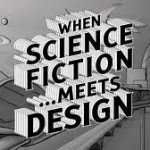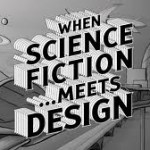By Sam Kinsley
‘Design Fiction’ describes ways of using storytelling techniques, especially in the form of video, to make speculative design ideas feel real. I have collected together the various resources from which I have drawn my materials for the talk into a preliminary bibliography that may be of use to others interested in the topic. Please find it below:
Bannon, Liam, 2011, “Reimagining HCI: toward a more human-centred perspective” Interactions 18 (4), pp. 50-57.
Bardram, Jakob, Bossen, Claus, Lykke-Olesen, Andreas, Halskov Madsen, Kim, Nielsen, Rune, 2002, “Virtual Video Prototyping of Pervasive Healthcare Systems”, in Proceedings of the 4th conference on Designing interactive systems: processes, practices, methods, and techniques, SIGCHI: ACM, London pp. 167-177.
Bergman, Eric, Lund, Arnold, Dubberly, Hugh, Tognazzini, Bruce, Intille, Stephen, 2004, “Video visions of the future: a critical review”, in CHI ’04 extended abstracts on Human factors in computing systems, ACM, Vienna, Austria, pp 1584-1585.
Bleecker, Julian, 2009, “Design fiction: A short essay on design, science, fact and fiction”, Near Future Laboratory, Los Angeles, CA,
Bleecker, Julian, Nova, Nicolas, 2009 A synchronicity: Design Fictions for Asynchronous Urban Computing. The Architectural League of New York, New York, NY.
Buxton, Bill, 2007 Sketching User Experiences: Getting design right and the right design. Microsoft Research, Redmond, WA.
Dourish, Paul, Bell, Genevieve, 2008, “‘Resistence is Futile’: Reading Science Fiction alongside ubiquitous computing” Personal and Ubiquitous Computing, forthcoming.
Halskov, Kim, Nielsen, Rune, 2006, “Virtual Video Prototyping” Human Computer Interaction 21 pp. 199-233.
Johnson, Brian David, 2009, “Science Fiction Prototypes Or: How I Learned to Stop Worrying about the Future and Love Science Fiction”, in Intelligent Environments 2009 – Proceedings of the 5th International Conference on Intelligent Environments, Callaghan, V., Kameas, A., Reyes, A., Royo, D., Weber, M. (Eds.), IOS Press, Barcelona pp. 3-8.
Johnson, Brian David, 2011, “Love and God and Robots: The Science Behind the Science Fiction Prototype “Machinery of Love and Grace””, in Workshop Proceedings of the 7th International Conference on Intelligent Environments Augusto, J. C., Aghajan, V., Callaghan, V., Cook, D. J., O’Donoghue, J., Egerton, S., Gardner, M., Johnson, B. D., Kovalchuk, Y., López-Cózar, R., Mikulecký, P., Ng, J. W. P., Poppe, R., Wang, M. J., Zamudio, V. (Eds.), IOS Press, Nottingham pp. 99-127.
Jones, Matt, 2011, “The Robot-Readable World” accessed online athttp://berglondon.com/blog/2011/08/03/the-robot-readable-world/
Jones, Matt, 2011, “”Sometimes the stories are the science…”” accessed online athttp://berglondon.com/blog/2011/11/21/sometimes-the-stories-are-the-science…/
Jones, Matt, 2012, “Gardens and Zoos” accessed online athttp://berglondon.com/blog/2012/01/06/gardens-and-zoos/
Kinsley, Samuel, 2010, “Representing ‘things to come’: feeling the visions of future technologies” Environment and Planning A 42 (11), pp. 2771-2790.
Kirby, David, 2008, “Hollywood Knowledge: Communication Between Scientific and Entertainment Cultures”. In: Cheng, D., Claessens, M., Gascoigne, T., Metcalfe, J., Schiele, B. (Eds.) Communicating Science in Social Contexts: New models, new practices. Springer, London, pp. 165-180.
Kirby, David, 2010, “The future is now: Diegetic prototypes and the role of popular films in generating real-world technological development” Social Studies of Science 40 (1), pp. 41-70.
Kirby, David, 2011 Lab coats in Hollywood: science, scientists and cinema. MIT Press, Cambridge, MA.
Larsen, Larry, 2009, “Inside Microsoft’s 2019 Vision Video” accessed online athttp://channel9.msdn.com/posts/LarryLarsen/Inside-Microsofts-2019-Vision-Video/
Schulze, Jack, 2010, “Media Surfaces: Incidental media” accessed online athttp://berglondon.com/blog/2010/11/03/media-surfaces-incidental-media/
Sterling, Bruce, 2009, “Design Fiction” Interactions 16 (3), pp. 20-24.
Tognazzini, Bruce, 1994, “The “Starfire” video prototype project: A case history”, in Computer Human Interaction 1994, Adelson, B., Dumais, S., Olson, J. S. Eds) ACM Press, Boston, MA, pp 99-105.
Vertelney, Laurie, 1989, “Using Video to Prototype Interfaces” SIGCHI Bulletin 21 (2), pp. 57-61.
Zeller, Ludwig, 2011, “What You See Is What You Don’t Get: Addressing Implications of Information Technology through Design Fiction” Lecture Notes in Computer Science 6770 pp. 329-336.
I hope this bibliography will be useful for any of you guys love to do a deeper research in ” Design fictions” topic 🙂







